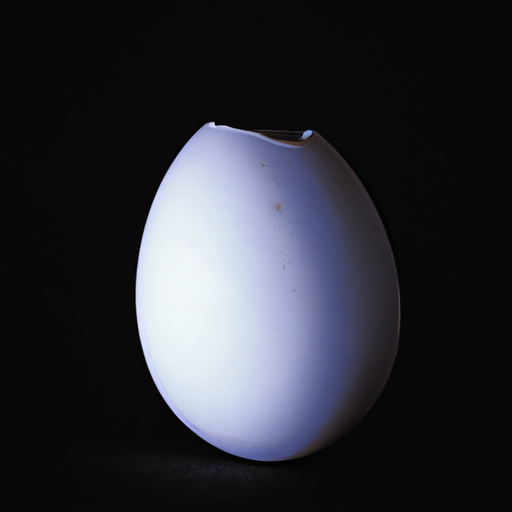During peak laying periods, hens require increased calcium to support the production of strong and healthy eggshells. But how can you effectively address this specific dietary need? Providing hens with a well-balanced diet that includes calcium-rich supplements such as eggshells, oyster shells, or calcium grit can help meet their increased calcium requirements. Additionally, ensuring free access to clean water and a stress-free environment can also contribute to their overall health and eggshell quality. By taking these simple yet crucial steps, you can ensure that your feathered friends have the necessary calcium intake they need to thrive during peak laying periods.
Understanding the importance of calcium for laying hens
Calcium’s role in eggshell formation
Calcium plays a crucial role in the formation of eggshells in laying hens. It is the main mineral component of eggshells and is responsible for providing strength and durability. When a hen lays an egg, she transfers calcium from her bones to the developing eggshell. The calcium is brought to the shell gland, where it combines with other minerals and proteins to form the hard outer shell. Without adequate calcium, hens may produce eggs with thin or weak shells, leading to various issues such as egg breakage or difficulties during incubation.
The impact of inadequate calcium levels on hens
Inadequate calcium levels can have detrimental effects on laying hens. When hens do not receive enough calcium, their bodies prioritize maintaining vital functions over eggshell production. This can result in calcium deficiencies within the hens’ own bodies, leading to increased risk of bone disorders like osteoporosis or skeletal deformities. Furthermore, calcium deficiency can also have negative effects on the overall health of the birds, impacting their immune system and reproductive capabilities.
The significance of calcium intake during peak laying periods
During peak laying periods, hens experience an increased demand for calcium due to the elevated production of eggs. This period, which typically occurs in the first few months after the onset of egg production, requires optimized calcium intake to support the high egg production rates. If hens do not receive adequate calcium during this time, they may experience a decline in eggshell quality, increased shell abnormalities, and reduced egg production overall. Therefore, understanding and addressing the increased calcium needs of hens during peak laying periods is crucial to ensure healthy and productive flocks.
Determine the exact calcium requirements of your hens
Consulting scientific research and industry guidelines
To determine the exact calcium requirements of your hens, it is valuable to consult scientific research and industry guidelines. Research studies conducted by poultry nutrition experts provide valuable insights into the optimal calcium intake for different breeds and ages of laying hens. Additionally, industry guidelines, such as those provided by reputable poultry feed manufacturers or agricultural extension services, offer practical recommendations based on extensive experience and knowledge in the field.
Differentiating calcium needs based on age and breed
It is important to recognize that the calcium requirements of laying hens can vary based on their age and breed. Younger hens may require lower levels of calcium compared to mature hens, and different breeds may have specific calcium requirements. Breeds that are known for producing larger eggs or eggs with thicker shells may have higher calcium needs. Understanding the specific requirements of your hens based on their age and breed will help you tailor their diet accordingly and ensure optimal calcium intake.
Considering individual variations in calcium utilization
Individual variations in calcium utilization among hens should also be taken into consideration. Some hens may have higher calcium absorption rates or more efficient utilization of calcium compared to others. Factors such as genetics, overall health, and individual variations in gut microbiota can impact calcium utilization. By monitoring individual hens’ performance and egg quality, you can determine if adjustments need to be made to meet their unique calcium requirements.
Providing a balanced diet for optimum calcium intake
Quality commercial poultry feed as a primary source of calcium
A balanced and nutrient-rich diet is essential for meeting hens’ calcium needs. Commercial poultry feed designed specifically for laying hens is a primary source of calcium. These feeds are formulated to provide the necessary nutrients, including calcium, in the correct proportions to support optimal egg production and shell quality. Ensure that you select a high-quality commercial feed that meets the nutritional requirements of your specific flock.
Supplementing with calcium-rich ingredients
In addition to commercial feed, supplementing with calcium-rich ingredients can help meet hens’ increased calcium needs. Including ingredients such as crushed oyster shell, limestone, or clam shells in the hens’ diet can provide an additional source of calcium. These supplements should be offered separately from the main feed as free-choice options, allowing the hens to regulate their intake based on their individual calcium requirements.
Balancing calcium with other essential nutrients
While calcium is crucial for eggshell formation, it is important to strike a balance with other essential nutrients in the hens’ diet. Providing a well-balanced diet that includes a variety of grains, protein sources, vitamins, and minerals ensures that hens receive all the necessary nutrients for optimal health and egg production. Consult with a poultry nutrition expert or veterinarian to ensure your flock’s diet is balanced and fulfills their overall nutritional needs.
Enhancing calcium availability through feed management
Considerations for feeding frequency
Feeding frequency can play a role in enhancing calcium availability for hens. Providing multiple feedings throughout the day allows hens to consume smaller quantities of feed at a time, promoting efficient calcium absorption. It also reduces the competition among hens during feeding and allows all birds to access the calcium-rich feed.
Optimizing feed particle size
The particle size of the feed can impact calcium utilization by hens. Grinding the feed to an appropriate particle size ensures easy digestion and uptake of nutrients, including calcium. Fine grinding or pelleting can enhance the availability of calcium and other essential nutrients, optimizing their absorption and utilization.
Preventing feed wastage and spoilage
To maximize the availability of calcium to hens, it is important to prevent feed wastage and spoilage. Hens may selectively consume certain feed ingredients, leaving behind the calcium-rich components. Regularly monitoring feeders, ensuring proper feed storage, and using appropriate feeders can help minimize wastage and maximize the utilization of calcium and other nutrients.
Promoting access to calcium supplements
Offering oyster shell or limestone as a free-choice supplement
Providing hens with free-choice access to calcium supplements, such as oyster shell or limestone, is crucial for addressing their increased calcium needs. These supplements should be made available in separate feeders alongside the regular feed. Hens will instinctively consume the calcium supplement as needed, regulating their intake based on their individual requirements.
Ensuring availability and convenience
To promote the consumption of calcium supplements, it is important to ensure their availability and convenience for the hens. Placing the calcium supplements in easily accessible locations within the housing facility encourages hens to consume them regularly. Regularly check and refill the calcium supplement feeders to ensure a constant supply for the hens.
Monitoring consumption rates and adjusting as needed
Regularly monitor the consumption rates of calcium supplements by your hens. Adequate consumption indicates that hens are meeting their calcium requirements, while low consumption may indicate an imbalance or deficiency. Keep a record of the consumption rates and consult with a poultry nutrition expert or veterinarian to make adjustments to the calcium supplementation as needed.
Managing dietary factors that affect calcium absorption
Controlling excess sodium levels
Excess sodium in the diet can negatively affect calcium absorption in hens. High levels of dietary sodium can interfere with calcium metabolism and compromise eggshell quality. It is important to control the sodium levels in the hens’ diet and ensure they are within the recommended limits. Consult with a poultry nutrition expert to determine the appropriate sodium levels for your flock.
Avoiding excessive phosphorus and phytate ratios
The ratio of phosphorus to calcium in the diet can have a significant impact on calcium utilization by hens. An excessive amount of dietary phosphorus, particularly when the ratio to calcium is imbalanced, can lead to reduced calcium absorption. Additionally, phytate, a form of phosphorus found in many plant-based ingredients, can bind with calcium and hinder its absorption. Careful formulation of the diet, considering the phosphorus to calcium ratio and phytate levels, is essential to optimize calcium absorption.
Considering the impact of vitamin D3
Vitamin D3 plays a crucial role in calcium absorption and utilization in hens. It aids in the absorption of dietary calcium from the intestines and helps in the deposition of calcium into the eggshell. Ensuring adequate levels of vitamin D3 in the diet or providing access to sunlight can enhance calcium utilization. Consult with a poultry nutrition expert or veterinarian to determine the appropriate vitamin D3 supplementation or exposure to sunlight for your hens.
Encouraging natural calcium sources
Allowing access to green leafy vegetables and forage
Providing hens with access to green leafy vegetables and forage is an excellent way to encourage natural calcium intake. Green leafy vegetables such as kale, spinach, or dandelion greens are rich in calcium and other essential nutrients. Allowing hens to graze on fresh pasture or providing them with suitable forage options not only supports their calcium intake but also promotes natural behaviors and overall well-being.
Exploring the benefits of shell grit
Shell grit, which is composed of crushed shells and other minerals, can serve as a natural calcium source for hens. Including shell grit in their environment or providing it as a separate supplement offers hens the opportunity to peck and consume small amounts of calcium-rich grit as needed. Shell grit also helps in the digestion of food in the gizzard, aiding overall nutrient utilization.
Utilizing eggshell recycling
Eggshell recycling is a sustainable practice that can contribute to the hens’ calcium intake. Collecting and crushing eggshells from previously laid eggs and reintroducing them into the hens’ diet can offer a natural calcium source. Proper processing and cleaning of the eggshells ensure their safety and quality as a supplement. Consult with a poultry nutrition expert or veterinarian for guidance on incorporating eggshell recycling into your flock’s diet.
Identifying signs of calcium deficiency
Recognizing soft-shelled or shell-less eggs
Soft-shelled or shell-less eggs are a clear sign of calcium deficiency in laying hens. When hens do not receive enough calcium, their bodies are unable to produce strong eggshells, resulting in eggs that have a soft or absent shell. Regularly inspecting the quality of the eggs can help identify any calcium deficiencies in the flock.
Monitoring changes in egg quality and production
Changes in egg quality and production can also indicate a calcium deficiency. Decreased eggshell thickness, increased shell abnormalities, or a decline in egg production rates may be signs that hens are not receiving adequate calcium. Monitoring the performance of your flock and observing any changes in their egg quality and production can help you identify and address calcium deficiencies in a timely manner.
Observing skeletal problems or leg disorders
Calcium deficiency can impact the skeletal health of laying hens. Hens with inadequate calcium may exhibit skeletal problems or leg disorders such as weak bones, deformities, or fractures. Regularly observing the movement and behavior of your birds can help identify any signs of skeletal problems. Prompt veterinary intervention is crucial to address these issues and ensure the hens receive the necessary calcium and other nutrients for proper bone development and maintenance.
Consulting a poultry nutrition expert
Engaging a veterinarian or poultry specialist
When it comes to addressing the increased calcium needs of hens during peak laying periods, consulting a poultry nutrition expert is highly beneficial. Engaging a veterinarian or poultry specialist with expertise in poultry nutrition can provide valuable insights and guidance tailored to your specific flock’s requirements. They can help you design a comprehensive nutrition plan, address any nutritional challenges, and ensure the overall health and well-being of your hens.
Seeking professional advice for specific challenges
If you encounter specific challenges related to calcium intake or any other nutritional aspect, it is recommended to seek professional advice. Poultry nutrition experts can assist with troubleshooting and providing targeted recommendations based on their expertise and experience. They can evaluate the individual circumstances of your flock, identify potential issues, and suggest strategies to overcome them.
Benefiting from customized dietary recommendations
By consulting a poultry nutrition expert, you can benefit from customized dietary recommendations for your hens. These professionals can assess your flock’s specific requirements, taking into consideration factors such as breed, age, egg production rate, and calcium intake needs. They can provide tailored advice on feeding strategies, supplementation options, and dietary adjustments to ensure optimal calcium intake and overall nutritional balance for your hens.
Monitoring and adjusting calcium strategies
Regularly evaluating flock performance indicators
Monitoring flock performance indicators is important when implementing calcium strategies. Regularly assessing metrics such as egg production rates, egg quality, shell strength, and hens’ overall health can provide valuable feedback on the effectiveness of calcium management practices. Comparing these indicators over time allows you to identify trends and make informed decisions regarding calcium supplementation and dietary adjustments.
Tracking calcium content in feed and supplements
It is essential to track the calcium content in both the main feed and any supplements provided to the hens. Monitoring and recording the calcium levels in these inputs can help ensure that they meet the recommended requirements for your flock. Regularly testing feed and supplement samples for nutrient content can provide valuable information for adjusting the overall diet and optimizing calcium intake.
Implementing changes based on results
Regular evaluation and analysis of performance indicators, as well as nutrient content data, empower you to make informed decisions and implement necessary changes. If you identify any issues with calcium intake or deficiencies in eggshell quality, use the gathered information to adjust the dietary composition, supplementation amounts, or feeding strategies. By constantly monitoring and adjusting your calcium strategies, you can ensure that your hens receive the optimal calcium levels they need during peak laying periods.




